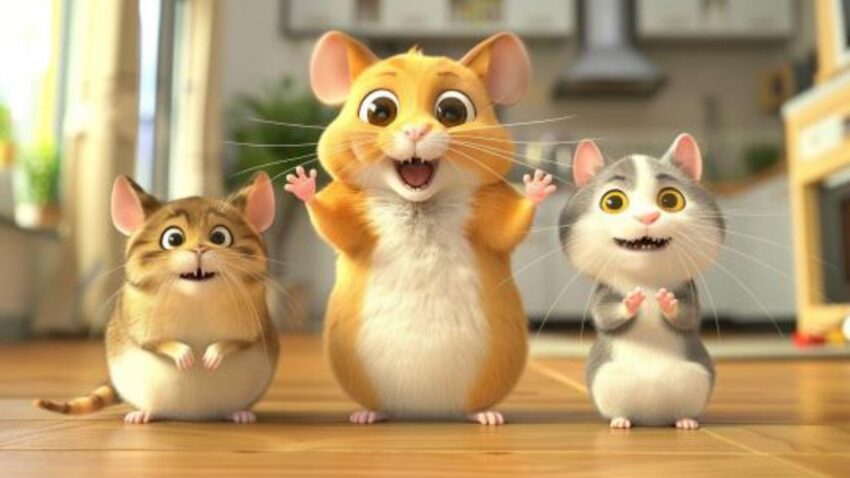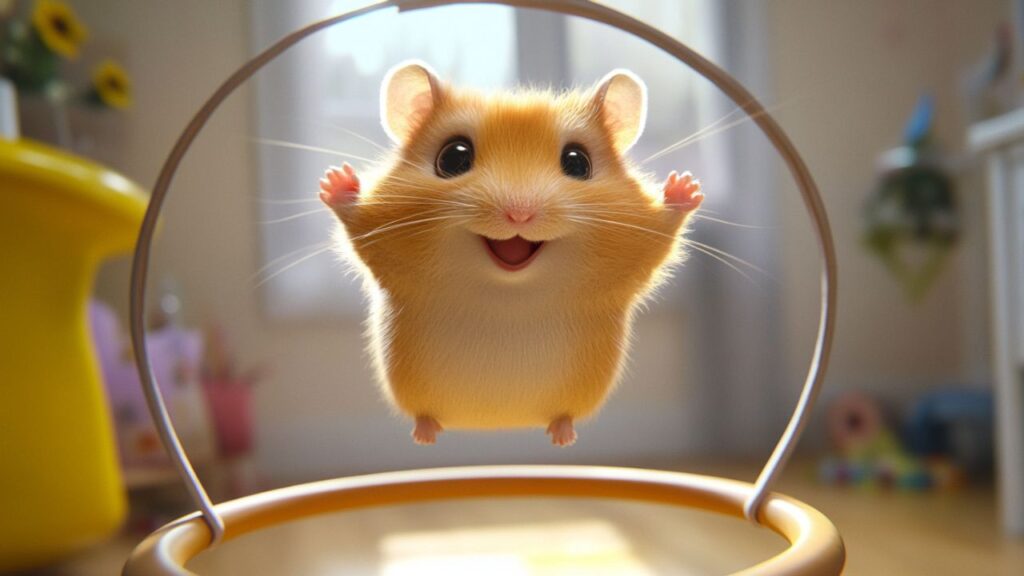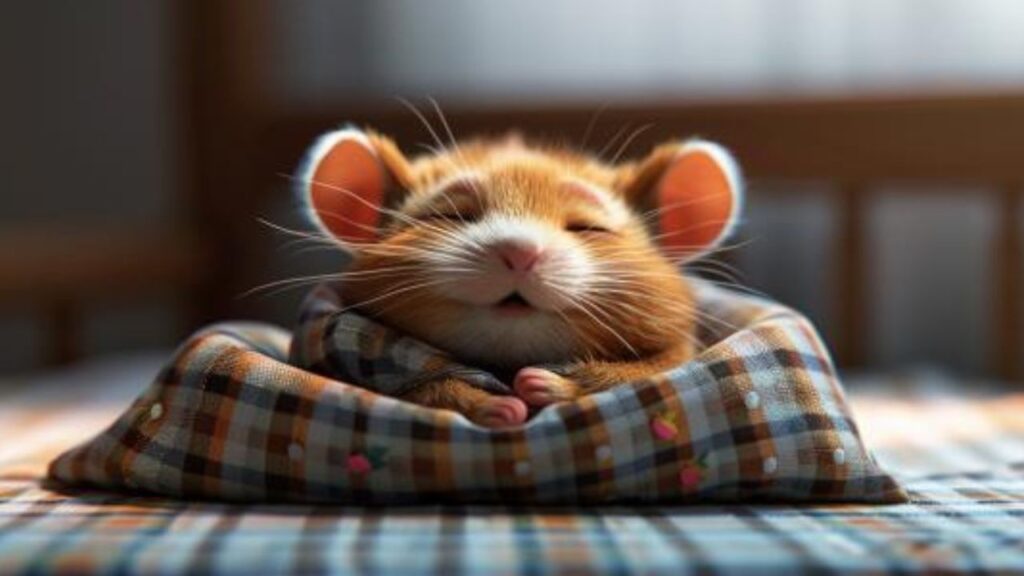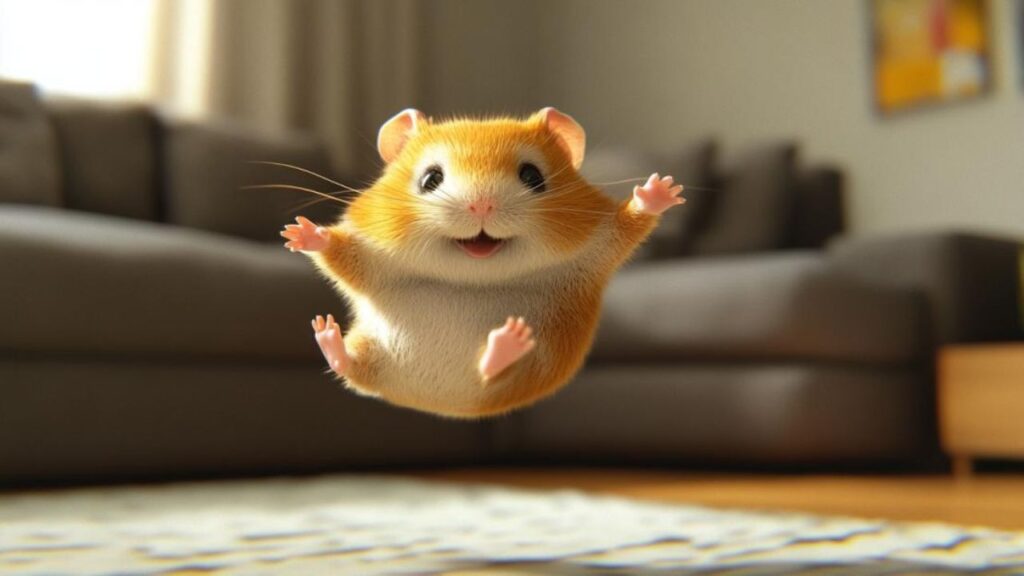Hello, fellow hamster enthusiasts! Today, we’re diving into the whisker-twitching world of Socialization Skills: Training Your Hamster to Be Friendly with Other Pets. Now, you might be thinking, “My tiny furball is already a champion wheel-runner, does he really need to be a social butterfly too?” The answer is a resounding yes! Socialization is not just about making friends; it’s about crafting a well-rounded, happy, and confident hamster.
Imagine your home as a little universe where different species coexist. Just like in any thriving community, communication, understanding, and mutual respect are key. A well-socialized hamster doesn’t just tolerate the presence of other pets; it thrives, leading to a harmonious multi-pet household. This is not just about avoiding the fur-flying drama; it’s about ensuring each of your pets feels safe, secure, and understood.
But why focus on socialization? In the wild, hamsters are known for their love of solitude, which might make you wonder if they can ever truly enjoy the company of others. While it’s true that hamsters value their alone time, with gentle guidance, they can learn to accept, and even enjoy, the presence of other household pets. This doesn’t mean your hamster will start curling up with your cat or playing tag with your dog, but it does mean they can learn to coexist peacefully, reducing stress for everyone involved.
A well-socialized hamster is a joy to behold, confidently exploring its environment, showing curiosity rather than fear when introduced to new “roommates,” and maintaining that adorable level of hamster sass we all know and love. Achieving this level of social zen in your pet menagerie enhances not only the quality of life for your hamster but for all your pets, making your home a peaceful, furry utopia.
So, buckle up, and let’s embark on this journey of turning your hamster into the life of the party (or at least a congenial guest). With a little patience, understanding, and our guide to socialization skills, you’re on the path to creating a blissful, whisker-friendly household. Let’s get those little paws on the social ladder and climb towards a happier, harmonious home for all your pets!
Understanding Hamster Socialization

When we think of socializing, we often picture gatherings, laughter, and interactions buzzing with energy. But for hamsters, socialization takes on a different tune, one that’s played out in the quiet corners of their cages and the gentle introductions to their human and animal companions. Let’s peel back the bedding to uncover the natural social behavior of these nocturnal creatures and the pivotal role early life experiences play in shaping their sociable selves.
The Natural Social Behavior of Hamsters
Hamsters, by their very nature, are often seen as solitary creatures. In the wild, they tend to live alone, defending their territory with a surprising zest for such small beings. This might lead you to wonder, “If they’re natural loners, why bother with socialization?” Well, while they may prefer to have their own space, hamsters can and do benefit from positive interactions with others, including humans and, carefully introduced, other household pets.
Understanding this natural tendency towards solitude is key in approaching hamster socialization with empathy and respect. It’s not about forcing your hamster to become the life of the party but rather gently encouraging them to accept and not fear the presence of others. This distinction is crucial for creating a stress-free environment for your hamster, where socialization becomes a choice, not a challenge.
The Role of Early Life Experiences in Hamster Socialization
The early weeks of a hamster’s life are a whirlwind of development, where they learn everything from how to be a hamster to how to interact with the world around them. This period is crucial for socialization, offering a golden window of opportunity to shape their future interactions with both humans and other pets.
Exposure to gentle handling by humans, positive encounters with other animals under supervised conditions, and a variety of environmental stimuli can lay the foundation for a well-adjusted hamster. Early life experiences teach them that the world is a safe place, filled with opportunities for exploration and friendship. This doesn’t mean they’ll become the social butterflies of the animal kingdom, but it does significantly increase the chances of them being open to and even enjoying interactions with others.
For hamster parents, this means starting socialization efforts as soon as possible, always guided by patience and sensitivity to the hamster’s comfort level. It’s a delicate balance between encouraging interaction and respecting their need for solitude, creating a socialization journey that’s as unique as each little hamster personality.
The Challenges of Multi-Pet Socialization

Embarking on the journey of socializing your hamster with other pets is akin to navigating a maze; it’s filled with twists, turns, and a few unexpected challenges. Understanding these potential hurdles and how to leap over them with grace is crucial for a smooth socialization process. Let’s dive into the intricacies of multi-pet socialization and learn to spot the telltale signs of stress in our furry friends.
Potential Difficulties in Socializing Hamsters with Other Pets
The road to harmonious multi-pet living is paved with good intentions, but it’s also lined with a few obstacles. First and foremost is the stark difference in size, behavior, and social needs between hamsters and most other pets. For instance, the playful pounce of a curious cat or the boisterous approach of an enthusiastic dog can be downright terrifying for a tiny hamster, whose instincts scream “predator!” rather than “playmate!”
Moreover, hamsters are nocturnal, meaning their prime time for socializing and exploring often happens when their potential furry friends are winding down for the night. This mismatch in schedules can lead to missed connections and added stress for your hamster, who might not appreciate being woken up during the day for introductions.
Another hurdle is the hamster’s natural tendency towards territoriality. Even the most well-meaning sniff from a canine or feline roommate can be perceived as an invasion of space, leading to stress or even aggression from your hamster. This territorial instinct is a hardwired part of their survival mechanism and requires careful management during socialization efforts.
Importance of Recognizing Stress Signs in Hamsters
As hamster parents, our communication with our furry charges is limited to body language and behavior, making it imperative to understand the signs of stress in our little ones. Recognizing these signs early can prevent distress and ensure the socialization process is as positive as possible.
Common stress indicators in hamsters include:
- Freezing: Staying motionless for long periods, often a sign of fear.
- Hiding: Spending excessive time in hideouts, avoiding interaction.
- Aggression: Nipping or biting, which is uncharacteristic behavior for a hamster that’s normally docile.
- Vocalizations: While not overly vocal, stressed hamsters may squeak or hiss as a sign of discomfort.
- Over-grooming: Similar to humans who might bite their nails when nervous, hamsters may groom themselves excessively under stress.
By staying attuned to these signs, we can adjust our socialization strategies to ensure they align with our hamster’s comfort levels. It’s about creating a safe space where they feel secure enough to explore the potential of new friendships at their own pace.
Preparation for First Contact

The moment has arrived: the first official meeting between your hamster and their future furry acquaintances. This initial introduction can set the tone for their relationship moving forward, making it crucial to approach with careful planning and a dash of optimism. Let’s map out the steps to create a safe and positive environment for this momentous occasion, ensuring the foundation for a budding friendship (or at least peaceful coexistence) is solidly laid.
Safe Environments for Initial Introductions
Choosing the right setting for the first face-to-face (or nose-to-nose) meeting is akin to selecting the perfect venue for a diplomatic summit. It should be neutral, safe, and free from the territorial claims of any party involved. For hamsters, this might mean setting up a small, secure area outside of their cage, where they can meet the other pet under close supervision.
- Neutral Territory: Opt for a space that neither animal considers their own, reducing the risk of territorial behavior. A quiet room, where neither pet has spent much time, can serve as a neutral ground.
- Controlled Environment: Ensure the area is escape-proof for a hamster and safe from any hazards. Remove any items that could cause stress or injury.
- Supervised Interaction: Stay present and attentive throughout the introduction, ready to intervene gently but promptly if signs of stress or aggression appear.
Tips on How to Gradually Introduce Your Hamster to Other Pets
Rushing the process of acquaintance can be tempting, especially when we’re eager to see our pets getting along. However, slow and steady wins the race in the world of multi-pet introductions. Here are some tips to ease into it:
- Scent Familiarization: Before the physical meet-up, swap bedding or toys between the hamster and the other pet for a few days. This allows them to get used to each other’s scent without the direct stress of a face-to-face meeting.
- Visual Contact: Start with allowing them to see each other from a safe distance, such as through the bars of the hamster’s cage or a clear pet gate. This helps them get used to each other’s presence and movements.
- Short, Supervised Sessions: Keep the initial introductions brief, no more than a few minutes, gradually increasing the time as they become more comfortable with each other.
- Monitor Body Language: Keep a close eye on their reactions to each other. Look for signs of curiosity or relaxed body language as positive indicators, and be ready to end the session if you notice any signs of stress or aggression.
By taking these steps, you’re not just introducing your pets to each other; you’re laying the groundwork for a relationship built on mutual respect and understanding. Remember, every pet is an individual, and their comfort and safety should always be the priority.
Building Positive Pet Relationships
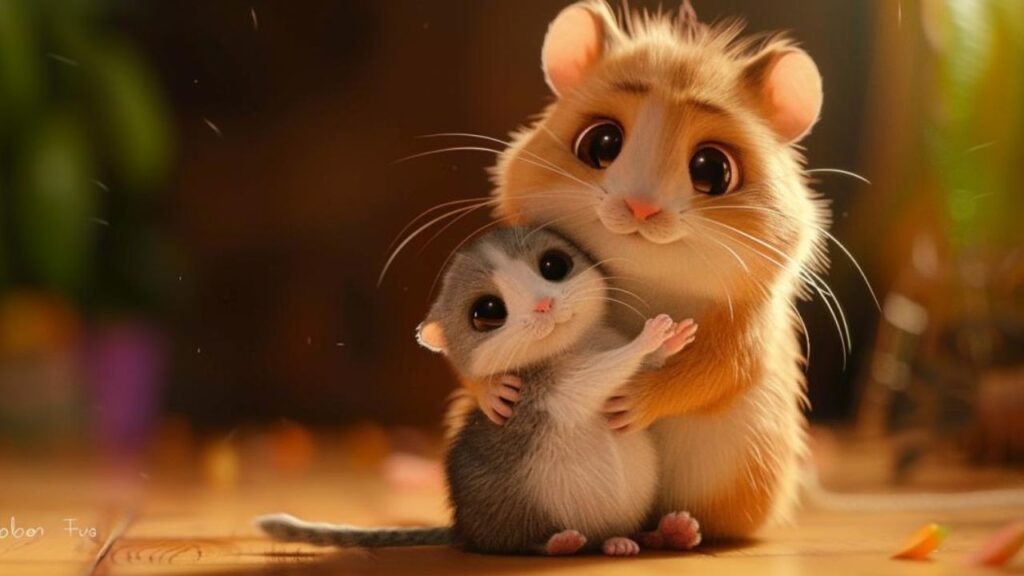
After the initial hellos and sniff-sniffs, it’s time to focus on nurturing those first flickers of curiosity into a steady flame of mutual respect and, hopefully, fondness. Building positive relationships between your hamster and other pets doesn’t happen overnight. Like all good things, it takes time, consistency, and a sprinkle of creativity. Let’s explore the techniques to reinforce positive interactions and ensure each meeting strengthens the bond between your furry family members.
Techniques for Reinforcing Positive Interactions
Positive reinforcement is the golden key in the world of animal training and relationship building. It’s about rewarding the behavior we want to see more of, creating a positive association for the pets involved. Here are a few techniques to encourage friendly interactions:
- Treats Galore: Immediately following a calm or curious interaction, offer both pets a treat. This helps them associate the presence of the other with something positive. For your hamster, this could be a tiny piece of vegetable, and for the other pet, something appropriate for their diet.
- Praise and Affection: Don’t underestimate the power of kind words and gentle petting. Praise your pets in a soft, soothing tone when they display positive behavior towards each other. This not only rewards them but also helps reduce any lingering anxiety.
- Playtime Parallel: While direct play between a hamster and a larger pet isn’t advisable, having parallel play sessions can foster a sense of camaraderie. Engage each pet in separate but simultaneous play within the same room, allowing them to enjoy their own activities while being aware of each other’s peaceful presence.
Monitoring and Managing Pet Meetings to Ensure Safety and Comfort
As the architect of these interspecies friendships, your role in monitoring and managing interactions is crucial. Even the most well-meaning pets can have moments of misunderstanding, so keeping a watchful eye ensures that every meeting ends on a positive note.
- Gradual Increase in Interaction Time: Start with short sessions and gradually increase the duration as the pets become more comfortable with each other. This slow buildup helps prevent overwhelm and keeps encounters positive.
- Recognize Signs of Stress or Aggression: Stay vigilant for any signs of discomfort, such as growling, hissing, or attempting to flee. If you notice any of these behaviors, calmly separate the pets and try again later, perhaps adjusting the approach based on what you’ve observed.
- Create a Safe Retreat: Ensure your hamster always has access to a safe, secure space where they can retreat if they feel threatened or scared. This safe haven is essential for giving them control over their environment and the confidence to explore at their own pace.
Building positive relationships between pets is a journey filled with learning and growth—for them and for you. It’s about celebrating the small victories, like a peaceful shared moment or a curious glance that doesn’t end in a scamper. With patience, understanding, and a heart full of love for your furry companions, you’re paving the way for a household brimming with harmony.
Hannah’s Training Tactics
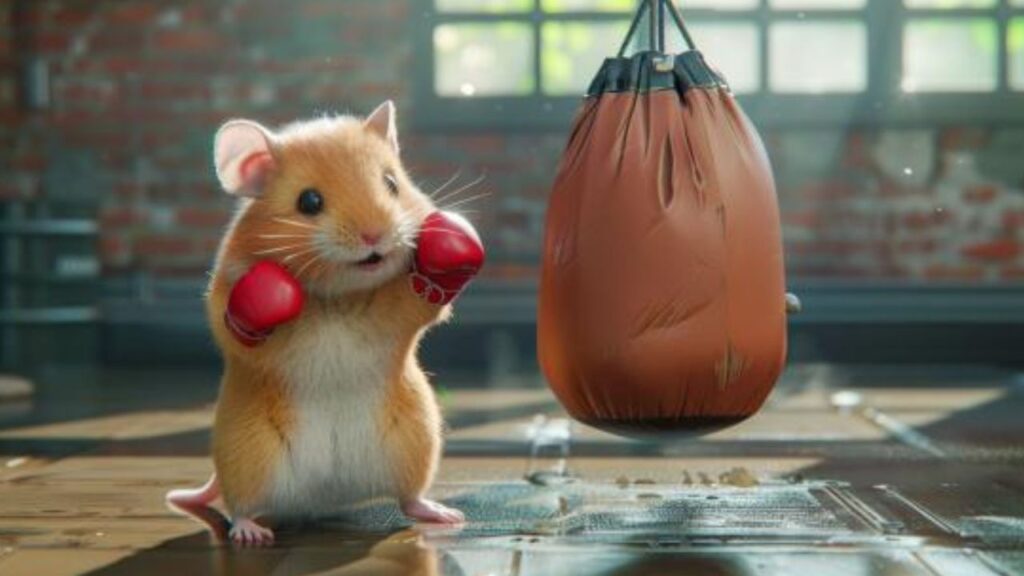
As we near the end of our journey into the art of hamster socialization, it’s time to arm you with a toolkit of strategies—Hannah’s Training Tactics. These are your go-to, actionable tips designed to make the socialization process as smooth and stress-free as possible for both your hamster and your other pets. Let’s dive into these nuggets of wisdom, each crafted to foster positive, peaceful introductions and interactions.
Sniff and Treat: Using Scent Familiarization to Build Comfort
The power of scent in the animal kingdom is like social media for humans—a way to get to know others without direct contact. Here’s how to harness this in your socialization efforts:
- Exchange Bedding: Swap small pieces of bedding between your hamster and the other pet. This allows each animal to become familiar with the other’s scent without the immediate stress of a face-to-face meeting.
- Treat Trails: Place treats along the swapped bedding or near items that carry the other pet’s scent. This creates a positive association, linking the smell of the other pet with the joy of treats.
Safe Spaces: Creating Secure Retreats for Stress-Free Introductions
Every pet needs a safe harbor, a retreat they can bolt to when the world gets a bit too overwhelming. Here’s how to create these vital spaces:
- Hamster Havens: Ensure your hamster’s cage is a no-invasion zone, where they can observe from a distance without fear of entry by other pets.
- Pet-Proofed Zones: For larger pets, designate areas of your home as pet-proofed zones where they can relax without encroaching on each other’s space.
Playdate Patience: Gradual Increase in Interaction Time Based on Positive Outcomes
Patience is not just a virtue; it’s a necessity in pet socialization. Rushing can backfire, but a slow and steady approach builds lasting bonds:
- Timed Introductions: Start with brief, supervised interactions, gradually increasing the time as your pets become more comfortable with each other. Think of it as setting up short playdates that grow longer over time.
- Celebrate Small Wins: Every peaceful interaction is a step forward. Acknowledge these moments with treats and praise, reinforcing the positive behavior.
Implementing these tactics requires a blend of patience, observation, and a deep understanding of your pets’ individual needs and personalities. Remember, the goal is not just to coexist but to co-thrive, creating a home environment where all your pets feel loved, secure, and part of the family.

